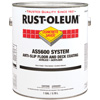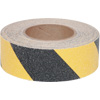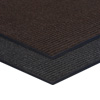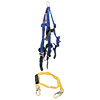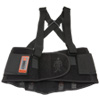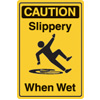Fall Prevention Safety Requirements
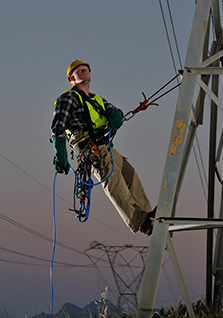
Fatalities caused by falls from elevation are a serious risk to American workers. According to the Occupational Safety and Health Administration (OSHA), in 2013 out of the 828 construction related fatalities, 291 were caused by falls.
OSHA requires employers to take precautions to prevent employees from falling off overhead platforms, elevated workstations, or into holes in floors and walls.
Employers must:
- Provide working conditions that are free of known dangers
- Keep floors in work areas clean and, when possible, dry
- Provide personal protective equipment at no cost to workers
- Provide job hazard training in a language workers can understand
Fall Prevention Program
Creating a fall prevention program is vital to ensuring workers are protected from fall hazards on-site. A successful fall prevention program depends on a three-pronged approach:
1. Safeguarding the Worksite
Make your workplace safer by regularly assessing your worksite for fall hazards. Address any potential hazards by taking the following approach:
- Cover or guard holes that workers could walk over
- Provide guard rails and toe-boards around elevated areas and dangerous machinery or equipment
- Add nets, stair railings, and hand rails where hazards exist
- Provide safety and harness lines
- Use warning signs to visually signify hazardous areas
2. Adopting Safe Work Practices
Develop a written fall protection plan that is in compliance with all applicable regulatory agencies. If hazards cannot be eliminated, the fall protection plan should state what measures should be used, how they are used, who is responsible for overseeing hazards and training, and what to do if an accident occurs.
3. Providing Training
Employers must train workers about job hazards and required personal protective equipment in a language they can understand. Employers should provide safety training manuals and materials, discuss with workers what is required of them, and test workers to be sure they understand the safety information they have received.
Fall Prevention Products
Fall arrest systems are required by OSHA if there is a risk of workers falling from an elevated position. A full-body harness with a shock-absorbing lanyard or a retractable lifeline is the only product recommended. Watch this video to learn how to properly put on a safety harness in six easy steps.
Floor mats help prevent slips, trips, and falls by collecting moisture and soil, which can lead to slippery conditions. Provide floor mats in wet areas, near drainage, and around false floors and platforms.
Types of Floor Mats:




Antislip paints and antislip tape treads add a durable, slip-resistant surface on floors. They grip the bottom of shoes and create friction to prevent falls.
What to Do If Someone Falls
If someone falls in the workplace, take immediate steps to provide medical assistance, if needed, and take the following steps to remedy the hazard if possible:
- Immediately report the incident to management and appropriate authorities
- Identify if the fall was preventable
- Refer to the established fall prevention program on eliminating the hazard
- Update written procedures if necessary and modify hazard training programs as needed
Shop Fall Prevention Products
NOTE: This information is a summary interpretation and was prepared as general reference material only. This summary is not authoritative as laws can be amended over time. For specific compliance requirements and updates, please refer to the actual code language and the statute or legal counsel.

